Posts Tagged: red-hot poker
Gesundheit!
I have always been impressed with the drama of hot pokers, Kniphofia. However several things held me back from purchasing them. First I don't like buying plants whose names I can't pronounce and Kniphofia ( knee fof ee a ) has had me stymied for a long time. When I was Googling Kniphofia, one of the first categories that came up was pronunciation, so I don't think I am alone. To me the name sounds like a sneeze; I get this uncontrollable urge to say "Gesundheit " every time I hear someone say it.
Secondly, most of the plants I have admired have been very large, with mounds of foliage reaching three to four feet high and sometimes five to eight feet wide and that's not even counting the blooms. I have a small front yard and a small border area available so I thought I would have to forgo a hot poker. (Note, in researching this article I found the most charming turn of phrase on the Digging Dog Nurserysite. Instead of calling a garden small, they called it space-thrifty.)
But then at Annie's Annuals I found Kniphofia 'Wol's Red Seedling'. This hybrid was carefully bred in England. Kniphofias are originally from South Africa, but were brought to England in the 1800s and are very popular there. This little darling has leaves that top out at a foot and flower spikes to two feet. It has a brilliant red color that is described by several sites as the reddest of all the pokers. They mentioned it could even be grown in a container. You guessed it, I brought one home.
I tucked it in the front yard in the border by the faux dry stream bed, amongst the 'Stella d'Oro' dwarf day-lilies and the lavender. The first summer it had three small blooms and I was a little discouraged. This year I have six blooms already, and the plant looks lovely, especially with the afternoon sun back-lighting it.
Kniphofias are deer resistant.They can handle clay soil, as long as it drains well. They are drought tolerant but do like water when the blooms are forming. If it is too dry at that point they will not bloom.
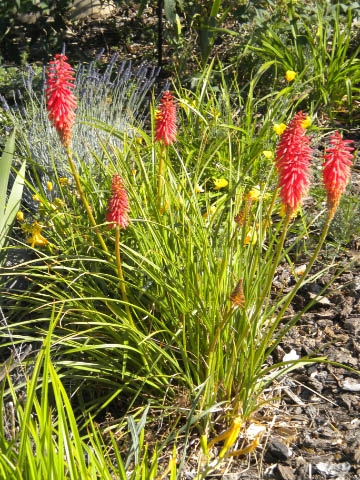
Kniphofia 'Wol's Red Seedling'. (photos by Karen Metz)
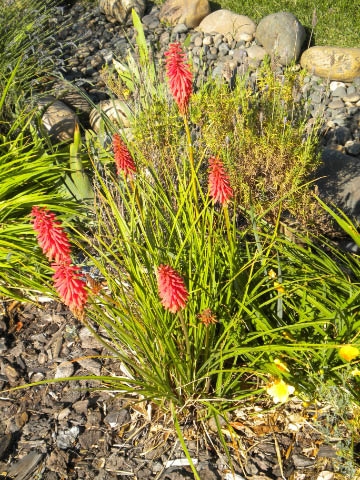
DSCN2663
It's No Vegetarian
Bee specialists like to point out that the yellowjacket is a carnivore and the honey bee is a vegetarian. They are, indeed. The yellowjacket is an...
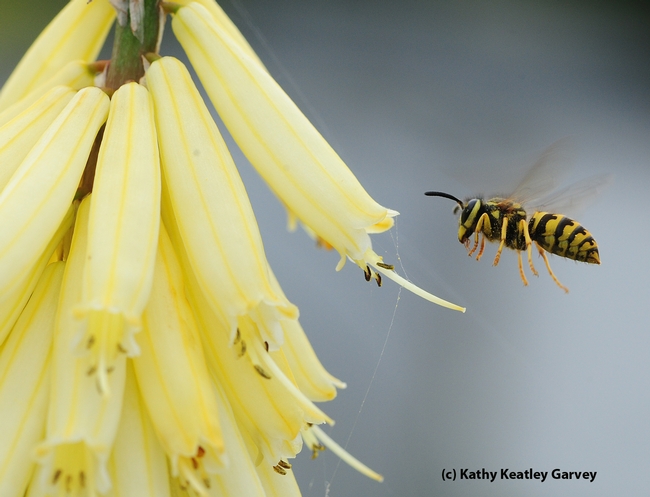
Western yellowjacket (Vespula penyslvanica) heading toward a red-hot poker (but this variety is yellow). (Photo by Kathy Keatley Garvey)
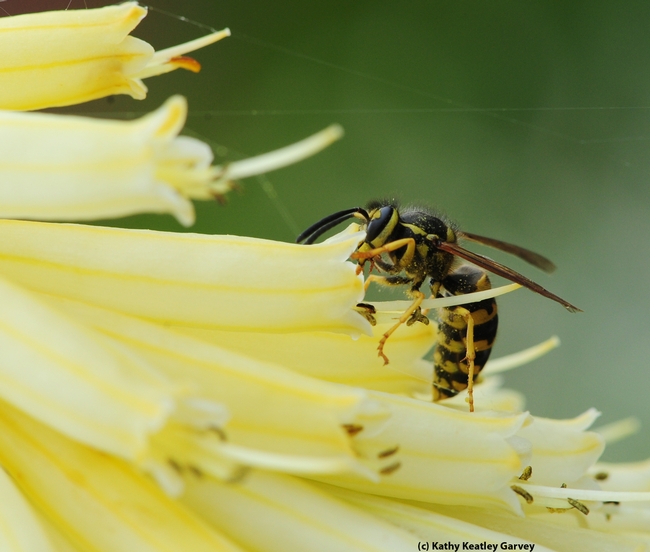
Western yellowjacket buries its head in a tubular flower. (Photo by Kathy Keatley Garvey)
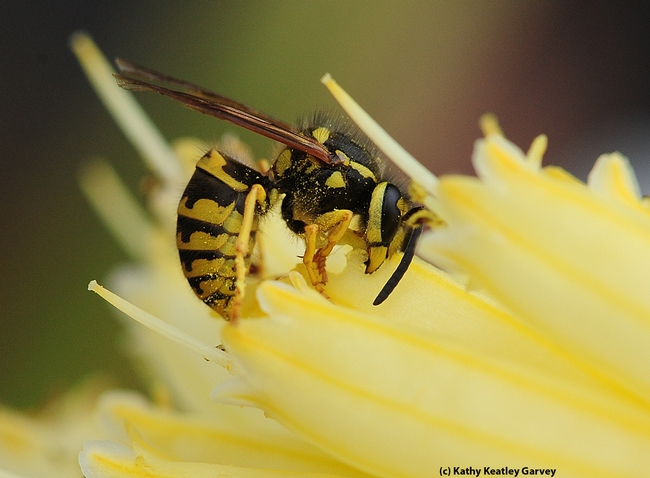
Western yellowjacket foraging. (Photo by Kathy Keatley Garvey)
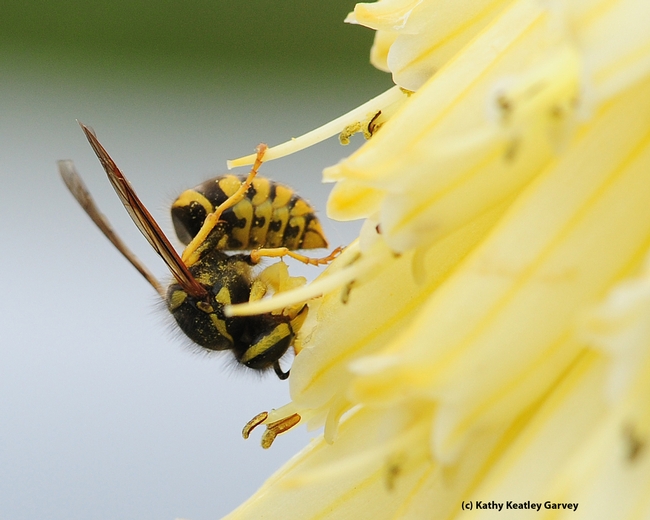
Western yellowjacket assumes the shape of a comma. (Photo by Kathy Keatley Garvey)
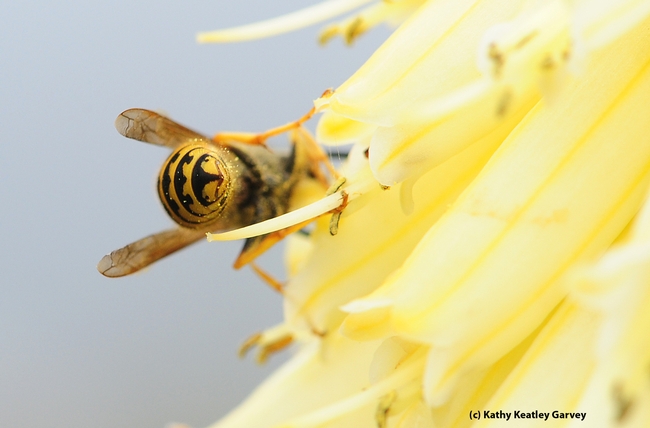
Bottoms up--western yellowjacket moves away from the camera. (Photo by Kathy Keatley Garvey)
What's Up, Cuz?
Country cousins. Honey bees and ants belong to the same order, Hymenoptera, and occasionally you see them together. Such was the case today in the...

Honey Bee and an Ant

Nectaring on Lavender
Good Dose of Christmas Cheer
Definitely a good dose of Christmas Cheer!In the plant world, that would be the Kniphofia “Christmas Cheer," also known as "red-hot poker." On a...

Foraging

Cleaning Her Tongue
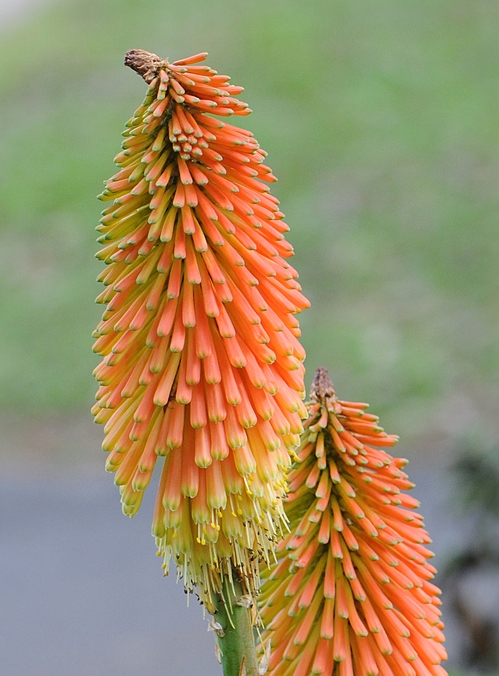
Christmas Cheer
Christmas Cheer
I always thought the red-hot poker was primarily red. Not. This one in the Storer Gardens at the University of California, Davis, was mostly...

Honey Bee

Red-Hot Poker in Storer Gardens

